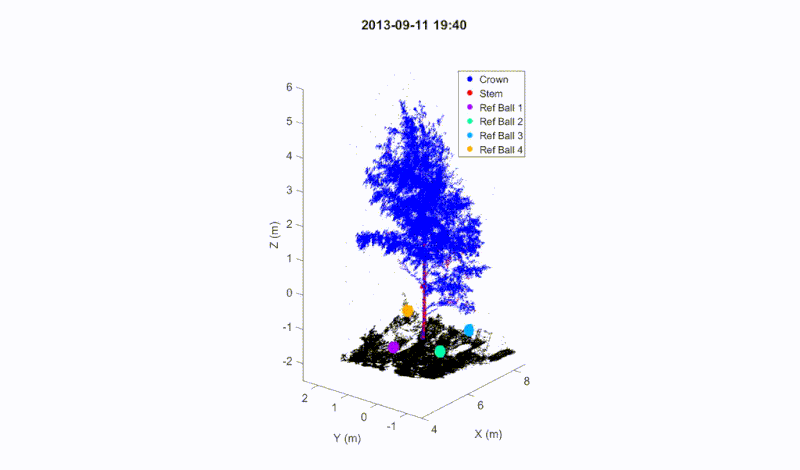Laser Scanner Suggest: “Sleeping” Birch Tree Rest Their Branches At Night
Tags: opinion

By Mayukh Saha / Truth Theory
Earlier we may not have looked at plants as sentient beings but that old notion is fast being proved wrong. It was only recently that scientists found out that trees have their own system of communication. They actually send each other nutrition through a fungal network that exists below the soil. Pretty cool, right? But that’s not all.
European scientists have now discovered that much like a lot of sentient life on the planet, trees need to get some sleep at night too. Reported in New Scientist by Andy Coghlan, while trees don’t exactly ‘sleep’ the way we do, they certainly do go into a period of rest.
A team of researchers observed a birch tree in Finland and one in Austria one night, with the help of a terrestrial laser scanner. The former underwent a scan every hour and the latter once every ten minutes. They also picked a windless night to make sure that the scanner wouldn’t just pick up movement due to the wind and the discovery they made was astonishing.
Also read: Trees Communicate With One Another Through The “Underground Web”
In their official statement to the press, the team explained that the branches and leaves started drooping/relaxing as the night wore on. They were four inches lower than usual a couple of hours before the sun was set to rise. As the light grew stronger, they once again raised themselves to their full height.
Not only was it a study of the trees, but it was also a way to measure the full potential of the scanner itself. Photographing these trees in a conventional way would have required a lot of light. This in itself would have disrupted the tree’s movement at night. Thanks to modern technology, they could use an infrared laser which only lit up the tree for less than half a second. The trees could both be scanned without actually being disturbed.

Credit: Eetu Puttonen
Now that it has been proven that this method works, researchers can conduct in-depth studies on the sleep cycles of plants and even study a group of trees at the same time. According to Andras Zlinszky, a Hungarian Biologist who co-authored this study, the drop in turgor pressure is what causes the plants to relax. Turgor pressure is the level of water inside the plant which holds it up. When this decreases, the branches and stems become more flexible and start to hang low because they aren’t supporting their weight as usual. This drop in pressure occurs when there is no more sunlight for photosynthesis to happen.
Over 5000 people have downloaded our free ebook “Growth Hacking Tips And Rituals For Optimal Living” CLICK HERE to get your free copy now
Another theory that researchers have presented is that trees also have a circadian rhythm. By repeating the study on different plant varieties we could learn more about this. In fact, circadian patterns have already been detected in varieties like the chestnut and the poplar.
Also read: Giant Spiral Path Allows You To Walk Above The Treetops In Denmark
For the researchers themselves, the more interesting query they need to work on is whether this entire process is dependent on the sun or it is dictated by an internal system. The fact that the branches start to rise again even before dawn could mean that it is dependent on the latter but more research is definitely necessary to know for sure.
All in all, it is a wonderful thing to know that plants are more like us than we know. Further studies along these lines could change the way we perceive plant life forever.
Image Credit: Elena Kovaleva 123RF
Leave Comment: